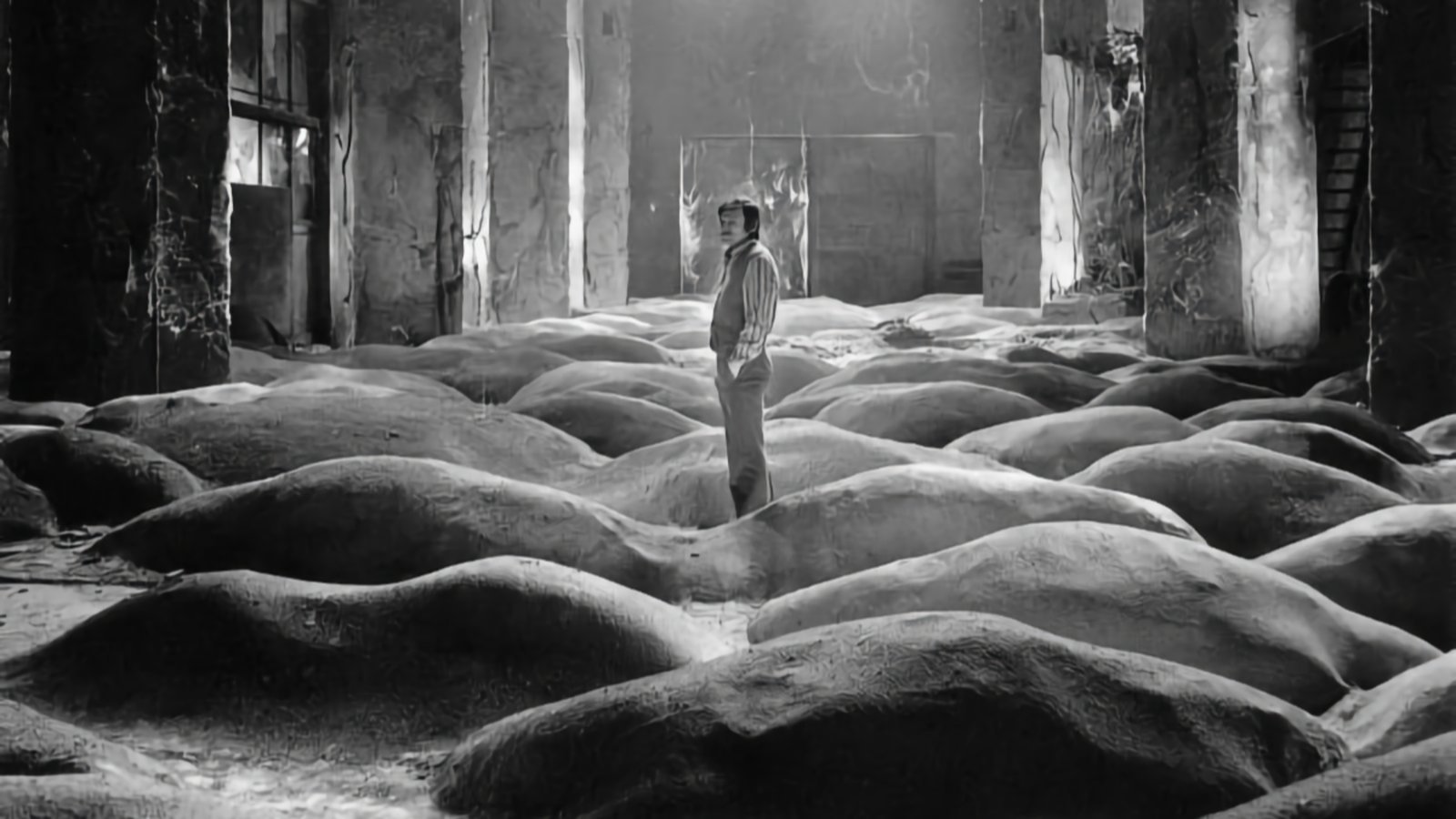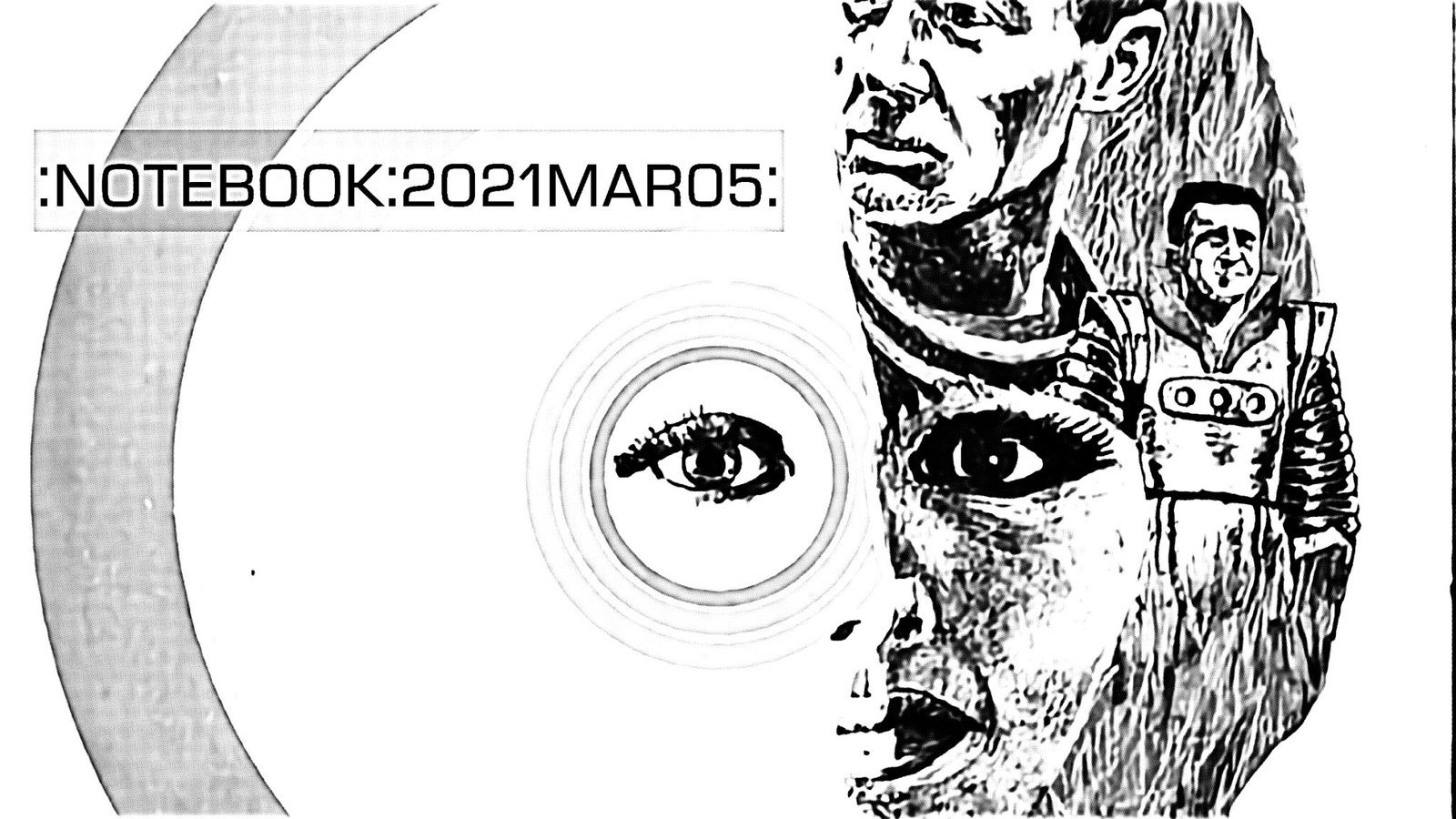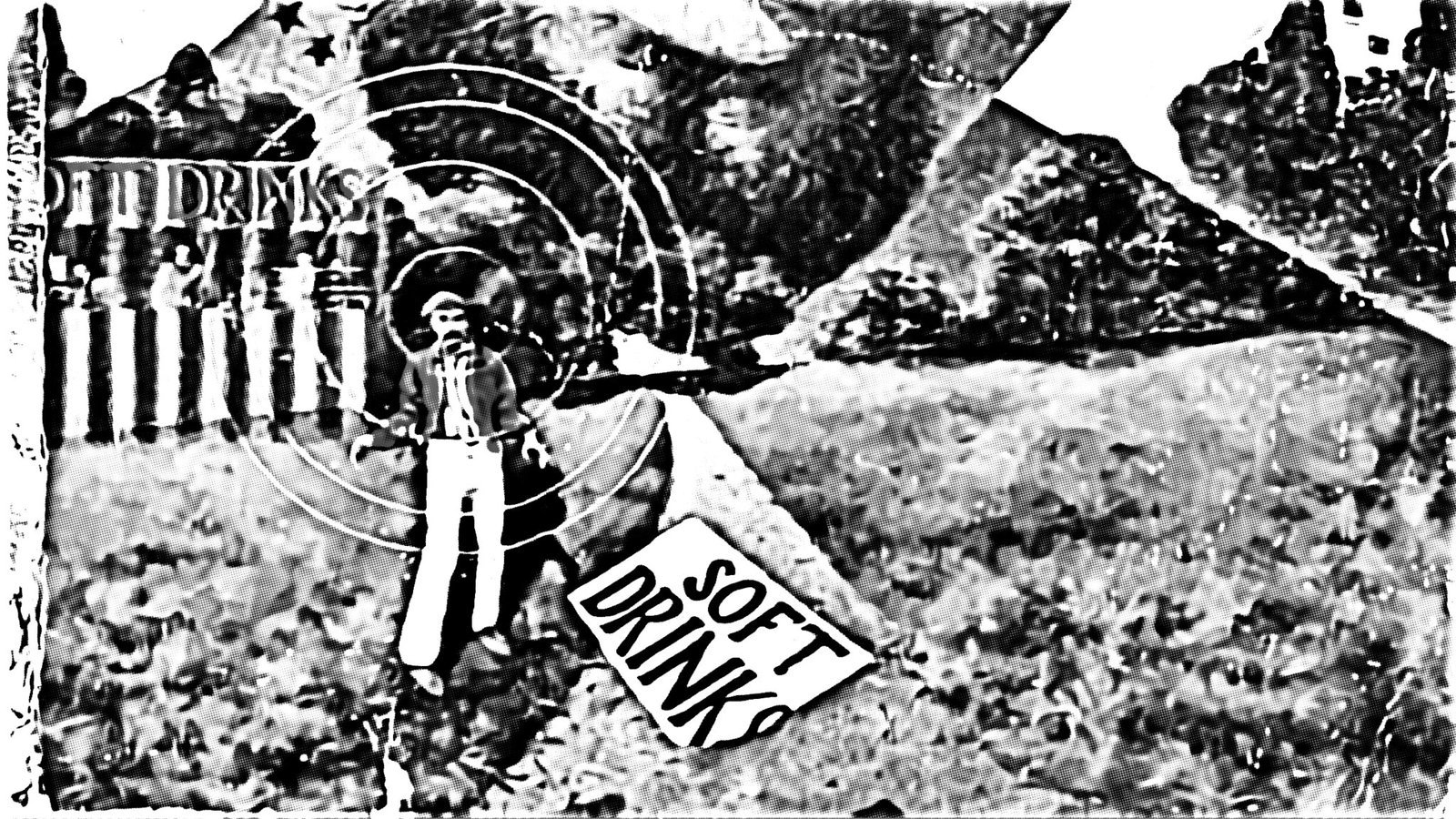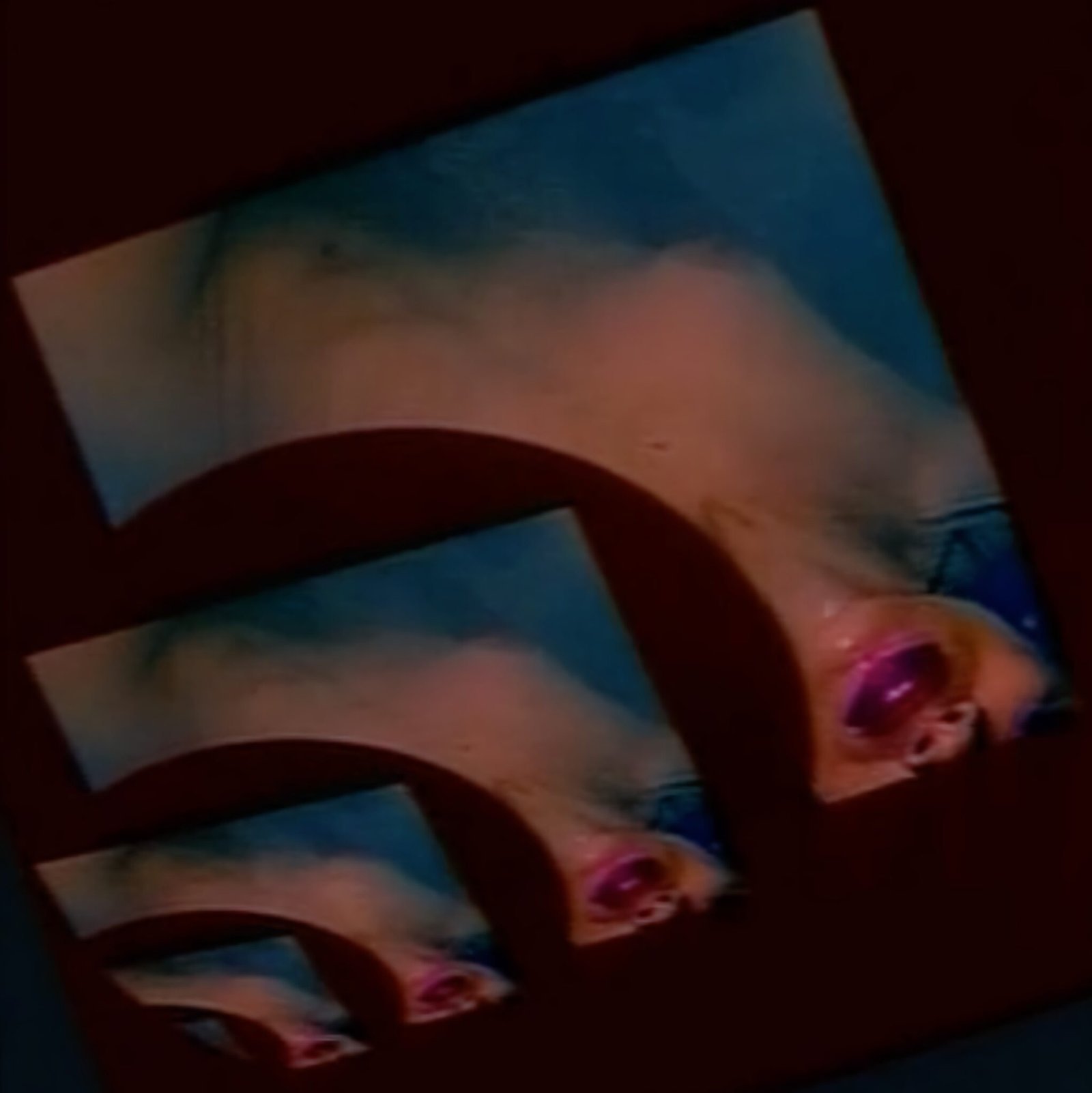
“Some sort of pressure must exist; the artist exists because the world is not perfect. Art would be useless if the world were perfect, as man wouldn’t look for harmony but would simply live in it. Art is born out of an ill-designed world.”
the scene celebrates itself
by M Donaldson // Leave a Comment

“Some sort of pressure must exist; the artist exists because the world is not perfect. Art would be useless if the world were perfect, as man wouldn’t look for harmony but would simply live in it. Art is born out of an ill-designed world.”
by M Donaldson // Leave a Comment

Steve Cobby – I’ve Loved You All My Life → Maybe there’s a lockdown stimulus to Steve Cobby‘s prolificness — he’s released two previous albums since the pandemic’s start, as well as a single and a murmur or two from his old outfit, Fila Brazillia. But Steve has always brimmed with musical output, a career-long series of textured and melodic songs with intricacies that belie their frequency.
If there is a stuck-at-home influence on his latest album, the warmly titled I’ve Loved You All My Life, it’s in the sense of longing for sightseeing. The cover depicts a green, lush, but enclosed location — the starry sky is our escape hatch. And the music seems to travel, not explicitly quoting worldly influences but hinting at them as if remembering what it was like to be a tourist. “Kintsugi” comes closest, resembling a sort of Polynesian jazz fusion with tuned percussion, soaring flute-like lines, and thick four-fingered chords. Someone’s whistling away in the background, like an overzealous member of Martin Denny’s band. There are many other sonic vacations on the agenda — “Plutus Maximus” feels like a night-time stroll through a pleasantly unfamiliar town, and “Keeping Ourselves Together” could soundtrack a tranquil cabana session, fruity drink in hand. And the album closes with “Mise En Abyme,” a wistful duet of harmonica and piano that might signal the recognition of memory, that the things we miss the most live on inside our heads.
I’ve Loved You All My Life is a joy to listen to and, yes, reassuring. This album might be my favorite of Steve’s work out of all of his recent (all worthy) options. And, if you’re into vinyl, act fast — the Bandcamp campaign to get the album on vinyl ends in a week (Steve’s already met his goal, but this is still the only way you’ll get to nab the wax).
——————
Tomaga – Intimate Intensity → It’s never too late to discover a great band. Sad circumstances may make it seem otherwise, as in the case of Tomaga. Somehow this London duo was off my radar despite first appearing in 2013. I happened across their 2019 album Extended Play 1 a few months ago, and from the first track, “Bluest,” I was immediately roped in. Tomaga’s sound is textured and intricate, with jazzy post-punk drums, flashes of discordance, and in-studio arrangements hinting at a modernized This Heat. That’s when I learned the bittersweet moment of my discovery — looking up Tomaga online, I saw that 1/2 of the band, Tom Relleen, had just died of stomach cancer.
Tomaga’s other half, drummer and percussionist Valentina Magaletti, announced last month that the band completed a new album before Relleen’s passing. Intimate Intensity is due on March 26 and, judging from the four advance tracks streaming on Bandcamp, this is an early contender for ‘album of 2021.’ The title track is especially potent, carrying forward all the elements that drew me into “Bluest.” The drums, accompanied by pingy percussion, play at a meter just out of grasp; a muted bass carries a wisp of melody; warm, melancholic strings embrace this sonic space. This is the final sound of Tomaga (as it’s the last song on the album), and it’s weighty and intensely moving.
Floating Points collaborated with Marta Salogni on a gorgeous, plaintive ‘reinterpretation’ of “Intimate Intensity,” released last week. It’s a benefit for The Free Youth Orchestra, a charity set up in Tom Relleen’s name. Amazing stuff.
Side note: I recently wrote about my love for an EP by Holy Tongue, and I now see that Valentina Magaletti is also a member of that project.
——————
Abel Ray – “Last Exit To Transkei” → I don’t listen to much house music anymore (which I suppose is funny from someone once kinda known as a house DJ). At one time, the genre sounded like the future but now, to me, a lot of it sounds stuck in the past. So it’s exciting when I run across something house-adjacent that’s nudging the genre forward an inch or two.
Abel Ray is an electronic music-maker hailing from Morocco, and “Last Exit To Transkei” is a track from his forthcoming Labyrinth EP. The cut draws upon the same pool as My Life in a Bush of Ghosts and similar fourth world experiments — a stew of cultural music and references stirred and poured over a rhythmic backbone. At times dubby and spacious, “Last Exit To Transkei” reveals its layers over ten engrossing minutes. Flutes, chants, hand percussion, and restrained synthesizers may sound like nothing new, but seamlessly meshed, they signal where things will go. This is music that blurs genre and location, the four-on-the-floor beat as a map guiding the listener through the territory.
by M Donaldson // Leave a Comment

The past is alive. It is political, it is ever-changing, and it influences our daily lives in meaningful ways … every statement about the past is a powerful statement about the present.
by M Donaldson // Leave a Comment
Even knowing that there are eight men onstage in this clip, the densely textured sound they achieve seems to belong to a much larger band. There is a relentless quality to the song, as Lurie, Fowlkes, and Nathanson build phrases into a frenzy, pausing only to let Ribot wail on guitar like an atonal Chuck Berry.
by M Donaldson // 2 Comments

My Twitter feed (among the type of accounts I follow) is filled with chatter about NFTs, those “non-fungible tokens” that are all the rage among music’s early adopter set. NFTs, as defined here, are digital representations of art (visual, audio, etc.). Though the art itself isn’t exclusive, ownership of the NFT can be. Ownership is tracked and verified on the blockchain.
We can look at this as similar to buying a skin or virtual item in a video game — a digital totem that broadcasts status within the game. Likewise, an NFT would elevate an owner’s status among an artist’s community of fans. The buyer of an NFT might also simply want to support the artist as a patron as NFTs, often auctioned, can have large pay-outs. Or, an owner could hope to turn a profit — one can resell an NFT at a higher price, adding a speculative aspect.
That’s probably a naïve explanation of what’s going on here. I’m hardly an expert or crypto-savvy. But what I do know doesn’t leave me bullish on the mass adoption of NFTs. It’s not the digital-ness that throws me off. I’m fascinated by the potential of intangibility and decentralization. However, I see NFTs, in their present execution, amplifying some age-old problems within the music industry.
News of NFTs reaping multi-thousand dollar sales makes them enticing to artists. This model seems a solution for those struggling under the streaming economy, as a single NFT sale could pay more than millions of streams. And plenty of unknown-to-me musicians have recently done well with NFTs, boosting the platform’s independent-friendly appeal. However, as many hopeful emerging artists learned through failed Kickstarter campaigns, the success of an artist’s NFT will depend on the size (and intensity) of a pre-existing fanbase. And as soon as known and established artists catch on, it’s likely music’s 1% will dominate, just as they do on Spotify.
There’s also the inherent class-separation of fans able to participate. It will get easier to create and bid on NFTs (right now, you’ve got to be technically in-the-know), but those strapped for cash will continue to be left out. I realize patronage has always existed in the arts — the rich funding culture — but we should examine how this tradition’s preservation is not exactly a radical move forward.
in some ways, NFTs won't affect u at all bc the ppl who have $389k to drop on a grimes video are operating in a completely different social sphere. let's accept this for what it is – a revival of the patron class in the face of continued failure by the state to support the arts pic.twitter.com/dbbAU6gFEU
— the taint modern (@mssingnoah) March 1, 2021
I’m also alarmed by the environmental impact of NFTs (and crypto-tech in general). Just before COVID-times, we started to see a reevaluation of a touring musician’s carbon footprint, notably by bands like Massive Attack and Coldplay. That was encouraging, as was the quick acceptance of live-streamed concerts early on in the pandemic, pointing to an alternative to exhaustive tours. But NFTs, if widely adopted, could regularly expend the same amount of energy as hundreds of ongoing tours. Duncan Geere published an informative blog post that explains this in detail:
A single cryptoart NFT involves potentially dozens of transactions. [Computational artist Memo] Akten analysed 18,000 of these tokens, finding that the average NFT has a footprint of around 211 kg of CO2 equivalent. That’s the same as an EU resident’s electric power consumption for more than a month, driving for 1000km, or a return flight from London to Rome. And that’s just for keeping track of who owns it — it doesn’t include the energy consumption used in the creation of the work, its storage, or the website it’s hosted on.
If you’re wondering how this amount of energy is possible from a digital token, check out this video from The Guardian about crypto’s effects on the environment:
Also linked in Duncan Geere’s piece is this blog post from digital artist Joanie Lemercier — she explains why she canceled a planned NFT sale and proposes some solutions to make the technology more sustainable. And Memo Akten, mentioned in the above quote, has created cryptoart.wtf, a tool to help us “get a sense of how much carbon is being emitted by the buying and selling of different digital artworks.”
I do think there are possibilities in the NFT model. The attraction is that there are few rules, and the medium is ripe for creative tweaking and innovation. That’s exciting. It’s young (as is crypto), and we’re all still learning. But we shouldn’t let the glow of promise blind us when there are lingering systemic problems to solve. The application of new technologies should help us find our way out rather than digging us in further.
by M Donaldson // Leave a Comment

Though universally revered, Martin Scorsese is sometimes viewed as an old-fashioned relic as he digs in his heels against changes in contemporary media. Previously, he got lots of nerdy flack for referring to superhero franchise films as “theme parks” rather than “cinema.” And, recently, in an essay on Federico Fellini, Scorsese went off on algorithms and the overuse of the word “content” to describe artistic output. He’s mainly referring to visual media, of course, and how “the art of cinema is being systematically devalued, sidelined, demeaned, and reduced to its lowest common denominator” when we refer to it all as “content.” Here’s Scorsese:
“Content” was used more and more by the people who took over media companies, most of whom knew nothing about the history of the art form, or even cared enough to think that they should. “Content” became a business term for all moving images: a David Lean movie, a cat video, a Super Bowl commercial, a superhero sequel, a series episode. […] … it has created a situation in which everything is presented to the viewer on a level playing field, which sounds democratic but isn’t.
A platform’s reliance on algorithms that can’t separate artistic intention from specious cash grabs exacerbates this perception. There’s so much talk about freeing ourselves from the gatekeepers, but perhaps ‘old-fashioned’ human curation is a gatekeeping we need. Scorsese again:
Curating isn’t undemocratic or “elitist,” a term that is now used so often that it’s become meaningless. It’s an act of generosity—you’re sharing what you love and what has inspired you. Algorithms, by definition, are based on calculations that treat the viewer as a consumer and nothing else.
“Scorsese is right,” tweeted music critic Ted Gioia. “Anyone who refers to film, music, or writing as ‘content’ is simply not a trustworthy custodian of anything of cultural value. Unfortunately, these are the key decision makers in media right now.”
I don’t have too much of a problem with media companies calling the music or movies they stream “content.” It’s like a politician using blatant dog whistle language — at least you know who’s in this for the right reasons and deserving of trust. What’s insidious is when we, as artists, are convinced to start using the word “content” instead of “art” or even “our work.” A musician creates a beautiful song, puts sweat into editing an accompanying video, and then thinks, “here’s some content for YouTube” — that’s distressing.
Language is powerful, and the words we use in our heads change our behaviors. If we start replacing words like “art” with “content” — even just internally — our intentions shift. We start feeding the companies hungry for content. Instead of making music and films for the fans or the human curators, we’re producing content for the algorithms.
Seth Godin must have read Scorsese’s rant. Soon after the essay’s publication, Seth wrote his own rant on his daily blog:
Publishing to an algorithm is not the same as publishing to an audience. And living in a culture that’s driven by profit-seeking algorithm owners is different as well. Because without curation, who is responsible? Who is guiding the culture? Who pushes the boundaries or raises the standards? […] …we benefit when we realize that the algorithm isn’t rooting for us and quite probably is working against us. The only winning approach is to earn permission and a direct connection with our fans and then act as curators for ideas (and as our own publishers).
Getting back to the power of language, I touched on this topic on the blog a few years ago when I commented on Cherie Hu’s idea that “The word ‘creator’ does more harm than good.” (Cherie’s original essay is offline, but I wholeheartedly recommend her Water & Music platform, where you can find many of her enlightening pieces.) I wrote this in my blog post:
It may seem like semantics, but the way we adopt and use language rewires our thinking. Hu’s point— which I never considered — is that the more we refer to ourselves as ‘creators,’ the easier it is to submit to the notion that our creations are in fealty to others. Notice how the services almost all use ‘creator’ — a sampling of examples Hu points out include YouTube Creators, Facebook for Creators, Spotify’s “Creator Marketing.’ So when a platform sneakily claims ownership of our work we’re desensitized against protest.
“Content” is the same. The language implicates employment, that we’re delivering goods in a fiefdom. Responsibility, leverage, and agency shift to the “content provider.”
Buckle down, folks. Dig in your heels like Martin. You’re artists making art. Don’t let anyone tell you anything else.
by M Donaldson // Leave a Comment

I’m launching a new series here on 8sided.blog called 3+1. As I run across interesting people doing interesting things, I’ll get them to answer three questions, and then, as a +1, they’ll tell us about something they love.
First up in Johan Kull, an expressive musician and vocalist based in Stockholm. He’s self-releasing a personal brand of lush, mellow music, featuring washes of ambient-influenced instrumentation accompanied by his consolatory voice. It’s a lovely combination. “Dreams,” Johan’s first single, was an auspicious debut, rewarded with national radio play on Britain’s BBC and Sweden’s P4. Now Johan has followed up with “Home,” a song about “things falling into place.” You can listen to the tune here, followed by a bit of 3+1 with Johan.
1: The new song is called “Home.” You say it’s about “finding home in a person,” and it’s especially calming and warm. Am I wrong to think this year of lockdown and isolation influenced this song?
It’s funny because many have assumed that it is about the past year. While that isn’t necessarily wrong, I think it’s nice that people can have their own interpretations. I’m glad that these feelings seem to be more present during these times and that “Home” can put those feelings into words for listeners.
2: What role does technology play in your songwriting? How about the influence of ambient music?
Digital instruments are an essential part of making my soundscapes but not a requirement. Bon Iver is probably my biggest influence, and he makes ambient textures with both acoustic and digital instruments. I have also built my sound around the contrasting relationship between the organic and the digital.
3: What’s the craziest thing you’ve ever seen happen at a concert?
I saw Dave Grohl falling off the stage and breaking his leg in Gothenburg in 2015. He walked back on crutches to the middle of the stage and thanked everyone with a cracking voice for staying at the show. He then dedicated “My Hero” to the crowd while waving a whiskey bottle he blamed on the doctor. A memorable moment!
+1: Something you love that people should know about.
I just discovered the show Schitt’s Creek a couple of weeks ago and binge-watched the whole thing. I believe everyone could get something out of watching this TV series … and everyone should.
by M Donaldson // Leave a Comment

Brian Eno’s 1984 video + music installation Thursday Afternoon is currently on display in the window of London’s Paul Stolper Gallery. It’s also available to stream from the gallery’s site — and in the correct aspect ratio.
by M Donaldson // Leave a Comment
This remix/reinterpretation of Tomaga’s “Intimate Immensity” by Floating Points is the loveliest thing I’ve heard in a long while.
by M Donaldson // Leave a Comment

Recorded audio can have a transportive intention, from the ‘it’s like you’re there’ feel of a great live album to the third LP in the Environments series plopping the listener in the middle of a hippie be-in.
Environments! That series was launched in 1969 when sound recordist Irv Teibel realized listening to the ocean waves he captured for a Tony Conrad film improved his concentration. Teibel eventually released eleven installments, with a few of the Environments records displaying this bold motto on the cover: “The music of the future isn’t music.”
Hippie be-ins aside, many used the Environments LPs like how we have ‘mood’ playlists on Spotify or ‘music for studying’ YouTube channels. The sounds were played in the background, non-intrusive for the most part, aiding the listener in achieving a flow state.1There’s a fabulous email newsletter called Flow State that gives music recommendations to listen to during your workday. You can lessen the anxiety of paper-shuffling and deadlines by making the brain think you’re working amid gentle rain in a pine forest.2I’m not a Star Trek fan, but for a few years, this was my constant deep work soundtrack. I think this sound hits my pleasure zone because it reminds me of a quiet overnight airplane flight.
These ‘environments’ take on an extra layer after months of lockdown and working from home. Concentration and flow state are still goals, but the transportive aspect has prominence. We want to feel like we’re somewhere else, to break up the Groundhog Day-ness of repetitive tasks in the same room. Every. Single. Day.
One recent example is I Miss My Bar. Set up by an actual bar in Monterrey, the site provides a series of looped audio feeds of sounds you might hear in your favorite drinking establishment. Sliders allow you to adjust the volumes of the various loops, or you can mute sounds entirely. You can also tailor the sounds to resemble a coffeehouse if that’s your flavor.
This isn’t the Environments record that transports us into a pine forest or a deserted beach. I Miss My Bar and sites like it imagine city life — the busy, crowded pub and the cheerful night out. Telling the brain that we’re in a forest is relaxing, but hanging out in a forest isn’t normal for most of us. Recapturing normalcy in these times is oddly regenerative, and for many of us, that’s the social sounds of a bar or coffeehouse.
As usual, YouTube takes things a step further. In The New York Times, Eliza Brooke writes about YouTube’s version of urbanized environments that features imaginary spaces and pop culture references. Of course, there’s the Rainy Day Coffee Shop, but there’s also the Twin Peaks diner and lots of Harry Potter. There’s an additional visual aspect with YouTube, often a static shot or animation looped alongside the audio, and sometimes subtly creative as in this subway ambience stream.
Writer Kyle Chayka refers to these videos as “an imagination aid” to help you “pretend you’re somewhere else, or someone else, far from your current worries.” While transportive, the Environments records were primarily for concentration, the cover text often noting their meditative qualities. 2021’s ‘environments’ deliver transportation first and foremost. The soothing, flow states are a byproduct of aurally planting ourselves outside of our overly familiar settings. These streams promise distant travels from a small room.